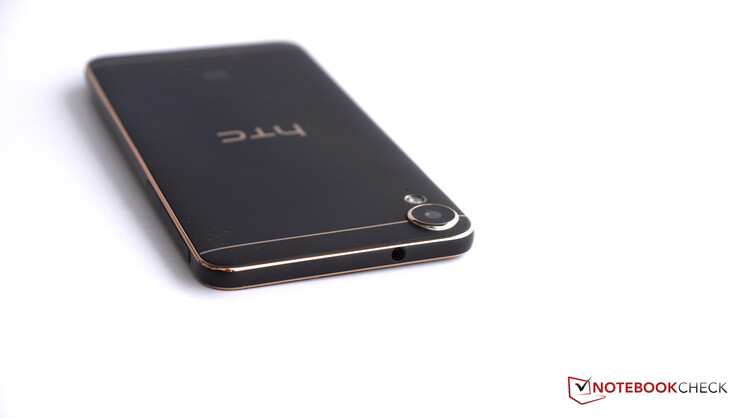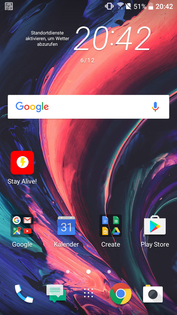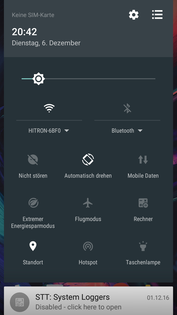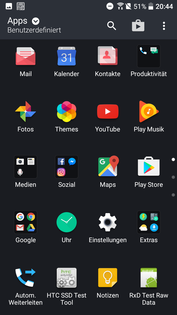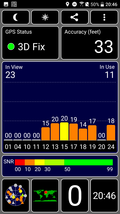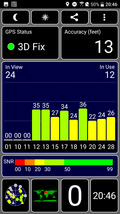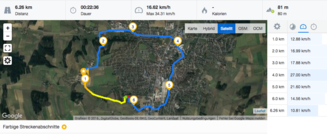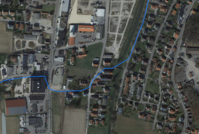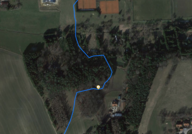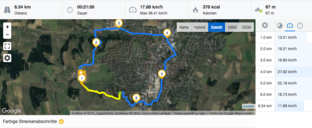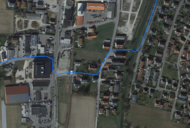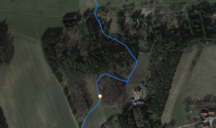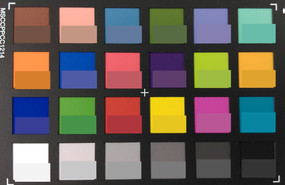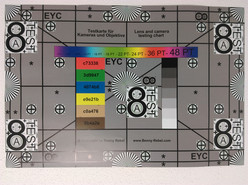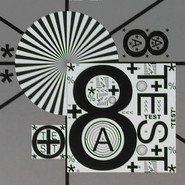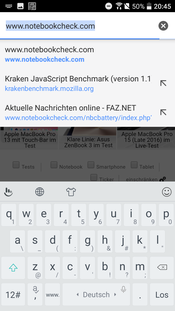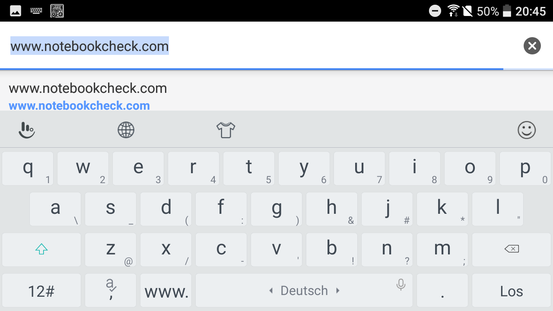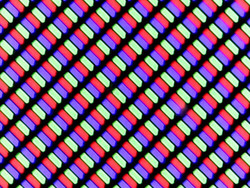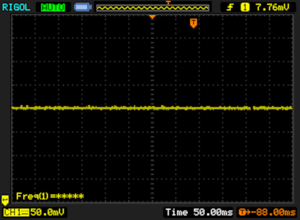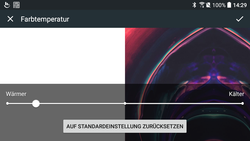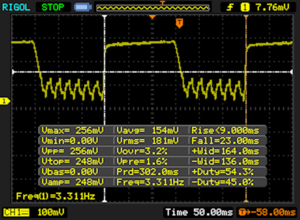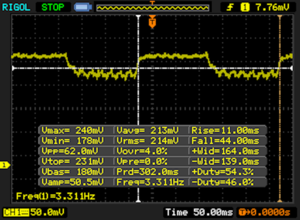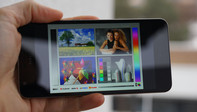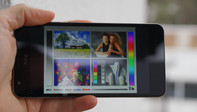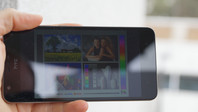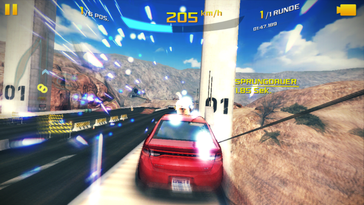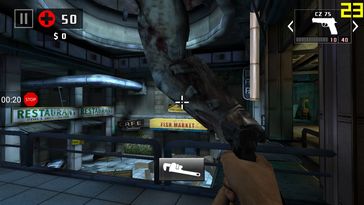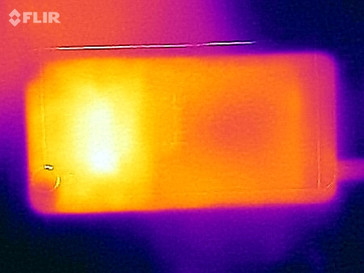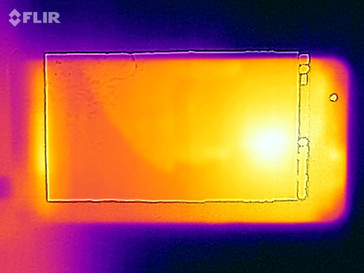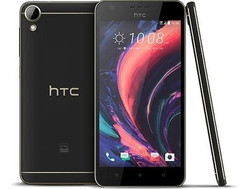HTC Desire 10 Lifestyle Smartphone Review
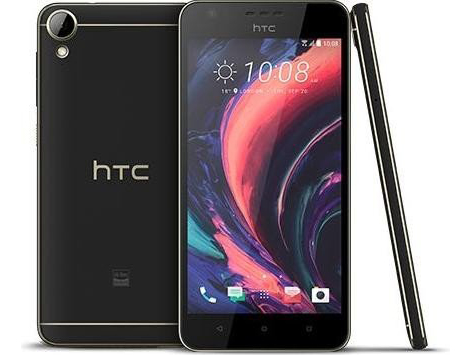
For the original German review, see here.
Buyers now get quite a bit of smartphone for around 300 Euros (~$314): screens with Full HD resolution, high-end SoCs, and high-resolution cameras are no longer unique. The Chinese manufacturer OnePlus was a trendsetter here. HTC also takes this approach of implementing high-end features in the mid-range, however, not in terms of screen and SoC but rather in terms of sound and casing. HTC's Desire 10 Lifestyle is to revitalize things and comes with a metal casing available in four colors and 24-bit hi-res audio.
HTC demands 299 Euros (~$313) for its 5.5-inch smartphone, which is even much cheaper than the latest model by OnePlus, the OnePlus 3T. ZTE's Axon 7, LG's Stylus 2, Asus' Zenfone 3, and Lenovo's Moto G4 Plus represent comparable devices.
The screen's low resolution and slow SoC perplexed us. How will HTC fare with its Desire 10 Lifestyle in the mid-range that has become hard fought in the meantime?
Case
HTC's Desire 10 Lifestyle wants to provoke interest by means of gold-colored elements on the casing. However, this bit of bling-bling is still very restrained and would satisfy Russian ladies just as much as west coast rappers. At least, HTC tries to escape the color monotony and offers two blue tones in addition to black and white. However, currently these are not available in Germany and thus it remains rather uninteresting here in Germany.
The casing with its metal bezel is stiff and furnished with a matte surface (except for the front). Strong pressure on the front and back leaves the screen unimpressed. However, the relatively large, 5.5-inch smartphone can be warped clearly, and then it produces a very audible cracking noise.
Connectivity
With 3 GB of working memory and 32 GB of storage capacity, HTC's Desire 10 Lifestyle is in the midfield of the comparison devices. Some offer a memory configuration of 4 GB / 64 GB in this price range, others like LG's Stylus 2 and Lenovo's Moto G4 Plus come with only 1.5 or 2 GB of working memory and 16 GB of storage. Users who save a lot of files can also insert a micro-SD card with a maximum of 2 TB and store the files there. Compatible apps can also be moved to the SD card. It is also possible to connect external storage devices to the USB port via an adapter thanks to USB OTG support.
Software
HTC uses Android 6.0.1 with quite outdated security patches from 1 June 2016. OS updates were not available at test time, and the older SoC excludes an update to Android 7. Consequently, buyers who value an up-to-date operating system will unlikely be happy with HTC's Desire 10 Lifestyle.
HTC tries to compensate this circumstance via preloaded software: Android has only been modified slightly, but the "BlinkFeed" notification overview that is opened by swiping left is an interesting extension. "HTC Connect" is to facilitate streaming content in the DLNA capable home network. Opened apps can be closed to clear memory with "Boost+". "Zoe VideoEditor" allows creating personal slide shows from taken videos and photos. Although all this is nifty and functions well, most features can be found in third-party apps in Google's Play Store.
HTC has fortunately not preloaded adware and only some social networking apps are installed.
Communication and GPS
HTC's Desire 10 Lifestyle supports LTE - but this can be expected for almost 300 Euros (~$314). The maximum speed of 150 MBit per second (download) and 50 MBit per second (upload) is standard. Eight LTE bands are supported: four UMTS and four GSM bands. That is usually sufficient in Europe, but the smartphone is not very suitable for globetrotters.
HTC's Desire 10 Lifestyle is not up-to-date in terms of Wi-Fi networks: Only the 802.11 b/g/n standards are supported. The faster ac standard and 5-GHz network support are absent. In view of the possible transmission standards, the speed of approximately 100 MBit per second in send and receive are quite acceptable.
| Networking | |
| iperf3 transmit AX12 | |
| ZTE Axon 7 | |
| HTC Desire 10 Lifestyle | |
| Asus Zenfone 3 ZE552KL | |
| iperf3 receive AX12 | |
| ZTE Axon 7 | |
| HTC Desire 10 Lifestyle | |
| Asus Zenfone 3 ZE552KL | |
The GPS module also does a good job in indoor tracking with an accuracy of approximately 11 meters (36 ft) here. It is fast and achieves a decent four meters (13 ft) outdoors.
We jumped on our bikes for a better evaluation of the smartphone's navigation capabilities and also packed in Garmin's Edge 500 for comparison. The Desire 10 Lifestyle located us quite decently although occasional signal losses were observed. Garmin's navigation system was considerably more accurate here, and it even recorded the slightest curve while the Desire 10 Lifestyle often simply drew a straight line between two remote measuring points.
Telephone and Call Quality
HTC relies on its self-developed phone app that is still similar to Google's stock app. Lists for contact groups and favorites can be created, and a call list and keypad with word suggestions that fade in when starting to dial are present. The app is user-friendly but we did not discover a real advantage over Google's stock app. Convenient: the number keyboard can be zoomed for seeing the numbers better.
The call quality did not convince us: metallic interference noises, static, muffled voices are what we heard. This was the case when using both the earpiece and the speakers, which have actually always been one of the strengths of HTC's smartphones. Considerably higher-quality smartphones exist for making calls even in this price range: ZTE's Axon 7 or Asus' Zenfone 3 from the comparison group offer much better call quality.
Cameras
HTC's Desire 10 Lifestyle relies on a rear-facing 13-megapixel camera and a front-facing 5-megapixel camera. Thus, it offers the lowest resolution cameras in the comparison field just in terms of pixel count. However, HTC has often made more of fewer pixels. Will this also be the case in HTC's Desire 10 Lifestyle?
The photos shot with the front-facing camera look well illuminated and fairly sharp at first. However, the user should not zoom in on them too strongly because inaccuracies soon become evident. Bright areas quickly overexpose. Videos can be recorded in 1080p using the front-facing camera. The quality is rather mediocre: Visible color noise is seen in dark areas, and the illumination only adapts very slowly when changing from bright to dark places.
The primary camera only has a simple LED flash and a conventional autofocus. The photos make a relatively pale and inaccurate impression. A visible image noise in large color fields appears in low-light conditions and the exposure is not always set ideally. Dark areas are often outlined weakly. The primary camera records videos in 1080p that are much better than those of the front-facing camera. The transition from dark to light is also faster. However, the autofocus often functions inaccurately, making manual corrections necessary.
Annoying: Videos recorded with our review sample were stored with wrong position sensor data so that portrait mode videos were displayed in landscape mode and vice versa.
Visible inaccuracies can also be seen when we photograph the test chart with the primary camera in defined light conditions in our studio. Furthermore, the colors look relatively pale. This is also our impression when we look at the color test photo of CalMAN: The color reproduction is definitely falsified.
Accessories and Warranty
In addition to the charger and USB cable, HTC's Desire 10 Lifestyle comes with a wrist strap that can be attached to the smartphone. A standard in-ear headset is also included.
On its website HTC offers all kinds of accessories that are not custom-made for the Desire 10 Lifestyle and that are thus compatible with several devices: A quick-charger is sold for just below 24 Euros (~$25), a hi-res headset that is presently sold out, and a smartphone holder for the car are also available.
HTC includes a 24-month warranty on its smartphones. Please see our Guarantees, Return Policies & Warranties FAQ for country-specific information.
Input Devices and Handling
The keyboard app that HTC uses is called TouchPal. It features diverse settings, such as dividing the keyboard or new themes matching to Christmas or favorite soccer league. The keyboard's height and width can also be adapted and an editing mode can be enabled. Additional dictionaries that, for example, include local terms or business language, can be added. However, not all features are free and a premium subscription with all contents costs around 5 Euros (~$5) per year. If this is unwanted, it is always possible to switch to Google's stock app. The keyboard itself is clearly arranged and easy to use.
The menu buttons are implemented outside the screen and respond accurately. The volume control could be could be easier to feel in our opinion. In return, the grooved standby button is easy to find.
The touchscreen responds very accurately even in the corners and at the edges. "Motion Launch" involves gestures that can be made on a disabled screen, for example, to unlock the smartphone.
Display
The relatively big 5.5-inch screen in HTC's Desire 10 Lifestyle has a resolution of just 1280x720 pixels. Among our comparison devices, LG's Stylus 2 has the same resolution, but ZTE's Axon 7 has four times the pixel count. There is no need for this in a smartphone, but Full HD panels are an evident improvement in this size. Consequently, single pixels are visible in diagonal lines and the image does not make as sharp an impression on the Desire 10 Lifestyle as on other smartphones in this price range.
The maximum brightness of 380 cd/m² is also rather mediocre. In return, the brightness distribution of 92 percent is relatively homogeneous and no brightness differences are visible on larger colored areas.
| |||||||||||||||||||||||||
Brightness Distribution: 92 %
Center on Battery: 380 cd/m²
Contrast: 1462:1 (Black: 0.26 cd/m²)
ΔE ColorChecker Calman: 6.6 | ∀{0.5-29.43 Ø4.77}
ΔE Greyscale Calman: 7.4 | ∀{0.09-98 Ø5}
96.6% sRGB (Calman 2D)
Gamma: 2.29
CCT: 8665 K
| HTC Desire 10 Lifestyle IPS, 1280x720, 5.5" | ZTE Axon 7 AMOLED, 2560x1440, 5.5" | LG Stylus 2 IPS, 1280x720, 5.7" | Lenovo Moto G4 Plus IPS, 1920x1080, 5.5" | Asus Zenfone 3 ZE552KL IPS, 1920x1080, 5.5" | |
|---|---|---|---|---|---|
| Screen | 4% | -5% | 7% | 3% | |
| Brightness middle (cd/m²) | 380 | 328 -14% | 370 -3% | 609 60% | 658 73% |
| Brightness (cd/m²) | 369 | 334 -9% | 374 1% | 589 60% | 633 72% |
| Brightness Distribution (%) | 92 | 88 -4% | 92 0% | 87 -5% | 93 1% |
| Black Level * (cd/m²) | 0.26 | 0.25 4% | 0.63 -142% | 0.66 -154% | |
| Contrast (:1) | 1462 | 1480 1% | 967 -34% | 997 -32% | |
| Colorchecker dE 2000 * | 6.6 | 4.6 30% | 6.1 8% | 3.8 42% | 4.9 26% |
| Colorchecker dE 2000 max. * | 10.4 | 14.7 -41% | 16.5 -59% | 8.3 20% | 9.1 12% |
| Greyscale dE 2000 * | 7.4 | 2.8 62% | 7 5% | 3.1 58% | 5.8 22% |
| Gamma | 2.29 96% | 2.29 96% | 2.25 98% | 2.06 107% | 2.26 97% |
| CCT | 8665 75% | 6612 98% | 8350 78% | 6725 97% | 7840 83% |
* ... smaller is better
Screen Flickering / PWM (Pulse-Width Modulation)
| Screen flickering / PWM not detected | |||
In comparison: 53 % of all tested devices do not use PWM to dim the display. If PWM was detected, an average of 8086 (minimum: 5 - maximum: 343500) Hz was measured. | |||
The black level benefits from the overall relatively low brightness: Dark pixels only shine at 0.29 cd/m². This very good rate results in an also very good contrast ratio of 1462:1. However, the displayed colors are not very vivid.
The reason for this becomes clear when examining it with our spectrophotometer and CalMAN software. The color accuracy is not particularly high and a minor bluish tint is visible in the grayscale levels. However, the color temperatures can be adjusted in the system, and color accuracy improves in the setting "Warm".
Display Response Times
| ↔ Response Time Black to White | ||
|---|---|---|
| 32 ms ... rise ↗ and fall ↘ combined | ↗ 9 ms rise | |
| ↘ 23 ms fall | ||
| The screen shows slow response rates in our tests and will be unsatisfactory for gamers. In comparison, all tested devices range from 0.1 (minimum) to 240 (maximum) ms. » 85 % of all devices are better. This means that the measured response time is worse than the average of all tested devices (20.2 ms). | ||
| ↔ Response Time 50% Grey to 80% Grey | ||
| 55 ms ... rise ↗ and fall ↘ combined | ↗ 11 ms rise | |
| ↘ 44 ms fall | ||
| The screen shows slow response rates in our tests and will be unsatisfactory for gamers. In comparison, all tested devices range from 0.165 (minimum) to 636 (maximum) ms. » 91 % of all devices are better. This means that the measured response time is worse than the average of all tested devices (31.6 ms). | ||
The panel's relatively low brightness has to defy the glossy screen outdoors. It accomplishes this feat reasonably well. Contents are only difficult to read in especially bright environments.
Thanks to the IPS panel, the viewing angles are good. However, visible brightness shifts appear when tilting the screen up and down (in landscape mode).
Performance
The performance chapter is interesting, as HTC's Desire 10 Lifestyle is not based on an exactly cutting edge SoC: Qualcomm's Snapdragon 400 MSM8928 comes from 2013, is not 64-bit capable, has four cores, and a maximum clock rate of 1.6 GHz. Even LG's Stylus 2 relies on a newer SoC and thus calculates faster than our review sample, which places it last place in terms of system speed and computing power. ZTE's Axon 7 achieves a four times higher score in some benchmarks.
The graphics performance of Qualcomm's Adreno 305 does not look much better. Our review sample also ends up in the last place here.
But what does it look like in real-world use? We experienced apps crashing several times during our tests. Some apps needed longer to launch. However, it is possible to navigate smoothly through the menu thanks to Android's frugality. More modern benchmarks that are based on OpenGL ES 3.1 do not run, and thus current effects cannot be displayed in games.
| AnTuTu v6 - Total Score (sort by value) | |
| HTC Desire 10 Lifestyle | |
| ZTE Axon 7 | |
| LG Stylus 2 | |
| Lenovo Moto G4 Plus | |
| Asus Zenfone 3 ZE552KL | |
| Geekbench 4.0 | |
| 64 Bit Single-Core Score (sort by value) | |
| HTC Desire 10 Lifestyle | |
| ZTE Axon 7 | |
| Asus Zenfone 3 ZE552KL | |
| 64 Bit Multi-Core Score (sort by value) | |
| HTC Desire 10 Lifestyle | |
| ZTE Axon 7 | |
| Asus Zenfone 3 ZE552KL | |
| 3DMark | |
| 1280x720 offscreen Ice Storm Unlimited Score (sort by value) | |
| HTC Desire 10 Lifestyle | |
| ZTE Axon 7 | |
| LG Stylus 2 | |
| Lenovo Moto G4 Plus | |
| Asus Zenfone 3 ZE552KL | |
| 1280x720 offscreen Ice Storm Unlimited Graphics Score (sort by value) | |
| ZTE Axon 7 | |
| LG Stylus 2 | |
| Lenovo Moto G4 Plus | |
| Asus Zenfone 3 ZE552KL | |
| 1280x720 offscreen Ice Storm Unlimited Physics (sort by value) | |
| ZTE Axon 7 | |
| LG Stylus 2 | |
| Lenovo Moto G4 Plus | |
| Asus Zenfone 3 ZE552KL | |
| 2560x1440 Sling Shot OpenGL ES 3.0 (sort by value) | |
| HTC Desire 10 Lifestyle | |
| ZTE Axon 7 | |
| LG Stylus 2 | |
| Lenovo Moto G4 Plus | |
| Asus Zenfone 3 ZE552KL | |
| 2560x1440 Sling Shot OpenGL ES 3.0 Graphics (sort by value) | |
| HTC Desire 10 Lifestyle | |
| ZTE Axon 7 | |
| LG Stylus 2 | |
| Lenovo Moto G4 Plus | |
| Asus Zenfone 3 ZE552KL | |
| 2560x1440 Sling Shot OpenGL ES 3.0 Physics (sort by value) | |
| HTC Desire 10 Lifestyle | |
| ZTE Axon 7 | |
| LG Stylus 2 | |
| Lenovo Moto G4 Plus | |
| Asus Zenfone 3 ZE552KL | |
| GFXBench (DX / GLBenchmark) 2.7 | |
| T-Rex Onscreen (sort by value) | |
| HTC Desire 10 Lifestyle | |
| ZTE Axon 7 | |
| LG Stylus 2 | |
| Lenovo Moto G4 Plus | |
| Asus Zenfone 3 ZE552KL | |
| 1920x1080 T-Rex Offscreen (sort by value) | |
| HTC Desire 10 Lifestyle | |
| ZTE Axon 7 | |
| LG Stylus 2 | |
| Lenovo Moto G4 Plus | |
| Asus Zenfone 3 ZE552KL | |
| GFXBench 3.0 | |
| on screen Manhattan Onscreen OGL (sort by value) | |
| HTC Desire 10 Lifestyle | |
| ZTE Axon 7 | |
| LG Stylus 2 | |
| Lenovo Moto G4 Plus | |
| Asus Zenfone 3 ZE552KL | |
| 1920x1080 1080p Manhattan Offscreen (sort by value) | |
| HTC Desire 10 Lifestyle | |
| ZTE Axon 7 | |
| LG Stylus 2 | |
| Lenovo Moto G4 Plus | |
| Asus Zenfone 3 ZE552KL | |
| PCMark for Android - Work performance score (sort by value) | |
| HTC Desire 10 Lifestyle | |
| ZTE Axon 7 | |
| LG Stylus 2 | |
| Lenovo Moto G4 Plus | |
| Asus Zenfone 3 ZE552KL | |
The user will have to browse through the Internet slowly with HTC's Desire 10 Lifestyle. Rendering modern technologies, such as HTML5 or JavaScript, simply takes longer than in many other smartphones from this price range.
| Mozilla Kraken 1.1 - Total (sort by value) | |
| HTC Desire 10 Lifestyle | |
| ZTE Axon 7 | |
| LG Stylus 2 | |
| Lenovo Moto G4 Plus | |
| Asus Zenfone 3 ZE552KL | |
| Octane V2 - Total Score (sort by value) | |
| HTC Desire 10 Lifestyle | |
| ZTE Axon 7 | |
| LG Stylus 2 | |
| Lenovo Moto G4 Plus | |
| Asus Zenfone 3 ZE552KL | |
| WebXPRT 2015 - Overall (sort by value) | |
| HTC Desire 10 Lifestyle | |
| ZTE Axon 7 | |
| LG Stylus 2 | |
| Lenovo Moto G4 Plus | |
| Asus Zenfone 3 ZE552KL | |
| JetStream 1.1 - Total Score (sort by value) | |
| HTC Desire 10 Lifestyle | |
| ZTE Axon 7 | |
| LG Stylus 2 | |
| Lenovo Moto G4 Plus | |
| Asus Zenfone 3 ZE552KL | |
* ... smaller is better
As to memory access, we first look at the micro-SD card reader. We test the transfer rate with our Toshiba Exceria Pro M401 reference card. HTC's Desire 10 Lifestyle is very sluggish with 50 to 70 percent slower transfer rates than the comparison devices.
Only LG's Stylus 2 is even slower when accessing the internal storage. This lack of performance is noticed in the long time needed for apps to launch.
| AndroBench 3-5 | |
| Sequential Read 256KB (sort by value) | |
| HTC Desire 10 Lifestyle | |
| ZTE Axon 7 | |
| LG Stylus 2 | |
| Lenovo Moto G4 Plus | |
| Asus Zenfone 3 ZE552KL | |
| Sequential Write 256KB (sort by value) | |
| HTC Desire 10 Lifestyle | |
| ZTE Axon 7 | |
| LG Stylus 2 | |
| Lenovo Moto G4 Plus | |
| Asus Zenfone 3 ZE552KL | |
| Random Read 4KB (sort by value) | |
| HTC Desire 10 Lifestyle | |
| ZTE Axon 7 | |
| LG Stylus 2 | |
| Lenovo Moto G4 Plus | |
| Asus Zenfone 3 ZE552KL | |
| Random Write 4KB (sort by value) | |
| HTC Desire 10 Lifestyle | |
| ZTE Axon 7 | |
| LG Stylus 2 | |
| Lenovo Moto G4 Plus | |
| Asus Zenfone 3 ZE552KL | |
| Sequential Read 256KB SDCard (sort by value) | |
| HTC Desire 10 Lifestyle | |
| ZTE Axon 7 | |
| LG Stylus 2 | |
| Lenovo Moto G4 Plus | |
| Asus Zenfone 3 ZE552KL | |
| Sequential Write 256KB SDCard (sort by value) | |
| HTC Desire 10 Lifestyle | |
| ZTE Axon 7 | |
| LG Stylus 2 | |
| Lenovo Moto G4 Plus | |
| Asus Zenfone 3 ZE552KL | |
Games
The older SoC prevents modern effects in games. However, since the latest interfaces are downward compatible, all games that we tested ran on HTC's Desire 10 Lifestyle. "Asphalt 8" only reached an average of 18 frames in high settings, which is too little for smooth gameplay. "Dead Trigger 2" just still ran smoothly at 29 frames. More basic games like "Angry Birds 2" are no challenge for the smartphone, but the slow storage access is noticed in long loading times.
Navigating via touchscreen and position sensor functioned accurately and smoothly.
| Asphalt 8: Airborne | |||
| Settings | Value | ||
| high | 18 fps | ||
| Dead Trigger 2 | |||
| Settings | Value | ||
| high | 29 fps | ||
Emissions
Temperature
The temperature development of HTC's Desire 10 Lifestyle is beyond reproach. The maximum load temperature is 37.4 degrees Celsius (99.32 Fahrenheit). Although this temperature is felt slightly, it is in no way critical. The idle temperatures are considerably lower with a maximum of 31.7 °C (89.06 °F).
We check whether the SoC throttles during prolonged load with GFXBench Battery Test that renders the same sequence thirty times in succession. The frame rates hardly differ from the first to the last run so that throttling can be excluded.
(+) The maximum temperature on the upper side is 37.4 °C / 99 F, compared to the average of 35.2 °C / 95 F, ranging from 21.9 to 247 °C for the class Smartphone.
(+) The bottom heats up to a maximum of 36 °C / 97 F, compared to the average of 34 °C / 93 F
(+) In idle usage, the average temperature for the upper side is 30.8 °C / 87 F, compared to the device average of 32.9 °C / 91 F.
Speakers
HTC relies on the number one sales argument that Taiwanese manufacturers have been doing best for a long time now: Incorporating first-rate sound in their smartphones. This was usually reserved for premium devices until now. HTC's Desire 10 Lifestyle is the first mid-range model that comes with 24-bit hi-res sound. HTC's proprietary "BoomSound" technology in conjunction with Dolby is to add more bang to the sound.
Although the speakers do not get excessively loud in the Pink Noise test, they feature finely balanced mids and trebles. Even a bit more bass is present than in other smartphone speakers. In fact, the speakers are hardly inferior to those in high-end devices. The opposite is true: The warm sound with clear low ranges make HTC's Desire 10 Lifestyle unique for a mid-range smartphone.
Audible differences to the also good sound of OnePlus' 2 when using high-quality headphones with HTC's Desire 10 Lifestyle are heard. The feeling that even more nuances are audible and that music is considerably more balanced is conveyed. However, this effect does not evolve with cheap headsets. The sound is also good via Bluetooth, but whether a difference is heard again depends on the speaker quality.
HTC Desire 10 Lifestyle audio analysis
(±) | speaker loudness is average but good (75.3 dB)
Bass 100 - 315 Hz
(-) | nearly no bass - on average 20.2% lower than median
(-) | bass is not linear (18.5% delta to prev. frequency)
Mids 400 - 2000 Hz
(+) | balanced mids - only 3.3% away from median
(+) | mids are linear (4.1% delta to prev. frequency)
Highs 2 - 16 kHz
(+) | balanced highs - only 3.2% away from median
(+) | highs are linear (4.4% delta to prev. frequency)
Overall 100 - 16.000 Hz
(±) | linearity of overall sound is average (20.7% difference to median)
Compared to same class
» 37% of all tested devices in this class were better, 8% similar, 55% worse
» The best had a delta of 11%, average was 35%, worst was 134%
Compared to all devices tested
» 55% of all tested devices were better, 8% similar, 37% worse
» The best had a delta of 4%, average was 24%, worst was 134%
ZTE Axon 7 audio analysis
(+) | speakers can play relatively loud (87.1 dB)
Bass 100 - 315 Hz
(-) | nearly no bass - on average 25.8% lower than median
(±) | linearity of bass is average (12.3% delta to prev. frequency)
Mids 400 - 2000 Hz
(±) | higher mids - on average 6% higher than median
(+) | mids are linear (4.6% delta to prev. frequency)
Highs 2 - 16 kHz
(±) | higher highs - on average 7.7% higher than median
(±) | linearity of highs is average (7% delta to prev. frequency)
Overall 100 - 16.000 Hz
(±) | linearity of overall sound is average (24.4% difference to median)
Compared to same class
» 58% of all tested devices in this class were better, 7% similar, 35% worse
» The best had a delta of 11%, average was 35%, worst was 134%
Compared to all devices tested
» 73% of all tested devices were better, 6% similar, 21% worse
» The best had a delta of 4%, average was 24%, worst was 134%
Frequency diagram in comparison (checkboxes above can be turned on/off!)
Energy Management
Power Consumption
Unfortunately, our power consumption measurements of HTC's Desire 10 Lifestyle did not present any useful results.
Battery Runtime
With 2700 mAh or 10.3 watt hours, the battery in HTC's Desire 10 Lifestyle is a bit smaller than the ones in the comparison devices. However, this does not necessarily mean something. The review sample managed a much longer runtime in the Wi-Fi test than ZTE's Axon 7 with the biggest battery: It shut down after 9:34 hours. However, the other comparison devices last at least 1:30 hours longer. HTC's Desire 10 Lifestyle is only positioned in the midfield in idle mode. The battery life is comparatively short otherwise.
It is still possible to use the smartphone two days without recharging in practice. However, everyone who uses the smartphone for excessive browsing or gaming will have to recharge it after one day. The battery life is throughout useful for real-world use, but devices exist that last considerably longer in this category.
| HTC Desire 10 Lifestyle 2700 mAh | ZTE Axon 7 3250 mAh | LG Stylus 2 3000 mAh | Lenovo Moto G4 Plus 3000 mAh | Asus Zenfone 3 ZE552KL 3000 mAh | |
|---|---|---|---|---|---|
| Battery runtime | 2% | 5% | 5% | 34% | |
| Reader / Idle (h) | 24.8 | 28.9 17% | 20.4 -18% | 20.4 -18% | 25 1% |
| H.264 (h) | 10.4 | 11.7 13% | 11.6 12% | 12.9 24% | 15.1 45% |
| WiFi v1.3 (h) | 9.6 | 6.9 -28% | 11.1 16% | 12.3 28% | 13.3 39% |
| Load (h) | 3.9 | 4.1 5% | 4.3 10% | 3.4 -13% | 5.9 51% |
Pros
Cons
Verdict
HTC has actually made some "provocative" decisions for its Desire 10 Lifestyle. These make the smartphone a device that might not be suitable for every user, but it provides a great sound experience for little money.
But first things first: We are in the mid-range and it is therefore not surprising that HTC had to make some compromises in order to incorporate high-end features such as 24-bit hi-res sound into the review sample. The screen is not particularly high resolution and is not very bright. The battery life is only mediocre and the performance rates are clearly below the standard in the price range. The cameras are not convincing and an update to the latest Android version is not expected in view of the outdated technology. Users who value good call quality will have to look elsewhere.
HTC's Desire 10 Lifestyle can be described as a good hi-res audio player with smartphone features. Unfortunately, aspects such as performance, cameras, call quality and software are clearly below average.
So, what positive things can be said? HTC's Desire 10 Lifestyle offers a quite decent memory configuration, a relatively well-built casing, and the GPS module also does a fairly good job. The input devices are reliable, and then there is, of course, the sound: The speakers are very good and the sound output via the headset is audibly more rounded than in other smartphones.
But is this enough? Likely only for downright audiophiles who do not want to or cannot afford HTC's 10. All others will get a smartphone that presents below average performance in many other aspects and can only really serve with an exciting sound. A genuine hi-res audio player, for example by Sony, costs roughly just as much as HTC's Desire 10 Lifestyle. This fact alone proves that not much was left in the budget for the other features.
HTC Desire 10 Lifestyle
- 12/09/2016 v6 (old)
Florian Wimmer


